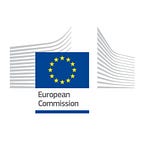Racing to help the victims of Pakistan’s catastrophic floods
The small wooden boat glides over what recently was fertile fields where farmers cultivated wheat, cotton and corn. After the recent catastrophic floods that submerged one-third of Pakistan, all that remains is a huge lake.
Here, in Pakistan’s already impoverished Sindh province, just like in the rest of the country, the loss of homes, agricultural lands and infrastructure has left millions depending on humanitarian assistance.
The EU has quickly mobilised life-saving aid and humanitarian funding to respond to the devastating floods.
The boat continues across what used to be village streets, passing a primary school partly submerged in yellowish, stagnant flood water.
People wade waist-deep past us, some balancing their belongings on small pieces of floating wood. We reach the village’s highest point, where we get off. Mattresses, clothing and household items lie scattered among partly collapsed houses and piles of thick mud.
Basra Mahmour Mohammed, an older woman with long grey hair tucked into her headscarf, sits on a bed under a tarpaulin surrounded by the remnants of her home.
“I used to live here with my son’s family,” she says, pointing to a heap of crushed bricks and wooden beams. “I have seen five big floods and storms in my lifetime, but this is the worst one.”
The waters also wiped out the wheat stores that Basra relied on for food for the next 10 months.
The floods, caused by unprecedented monsoon rains, have killed over 1,700 people and affected an estimated 33 million people across Pakistan.
In response, the EU and its partner Cesvi, an Italian aid group, have for weeks been providing water, food, shelter and other life-saving assistance to communities like this one across the area.
All told, the EU has released over €30 million in humanitarian funding to its various partners to deliver aid across the country. The EU also coordinated all incoming assistance offered by EU countries through its Civil Protection Mechanism.
Given the vast damage this disaster has caused, communities will however need years to recover. Food shortages are likely to increase, putting additional strains on a population already reeling from climate change and galloping inflation.
On the opposite side of the submerged field, thousands of people have fled overwhelmed villages and have set up makeshift camps along an elevated dirt road. Exposed to the harsh elements, families have lived for weeks under flimsy shelters made up of tarpaulins and wooden sticks.
Some have managed to salvage a few of their valuables: some goats or an old motorcycle. Many more have been left without anything.
“We have no idea how long we’ll have to stay,” said Geni Loung, 34, who shelters in a ramshackle hut made of bamboo and plastic sheeting. “And even when the water goes away, we have nothing in the village. The water destroyed everything.”
Although Geni and the other displaced people here receive water and other humanitarian aid, the health situation is increasingly concerning.
The UN is now warning of a second wave of catastrophe, with a high death toll from disease, such as malaria, cholera, and dengue, as well as malnutrition. In addition, snake bites have become a problem, as cobras, kraits and other venomous reptiles have been forced out of their natural habitats by the rising water.
“We have seen a high risk of water-borne diseases,” said Taheeni Thammannagoda, who oversees EU humanitarian programs in Pakistan. “Desperate people have even resorted to drinking flood water because they have no other option. One of our major priorities is to urgently provide people with safe drinking water and sanitation.”
The parts of Pakistan that were hit the hardest by the floods are also some of the country’s poorest. The vast majority of people living in rural Sindh province fall well below the poverty line, with severely limited access to healthcare, education and other vital services.
Chandiki Kholi, a woman in her mid-40s, is one of the few in the area who have been able to return to her village. She immediately started the daunting task of clearing her hut of thick mud and debris.
“Our houses are made from straw and mud,” she explains. “They break very easily when we get bad weather, but we don’t have enough money to rebuild them.”
Kholi and the others in the village are day labourers, taking odd jobs as porters, farm hands or in construction. Others sell snacks, cigarettes and soft drinks by the roadside. They usually make around 200 rupees for a full day — less than €1.
“It’s very hard to survive here,” she says. “And the floods have made it even harder.”
Story by Peter Biro, Regional Information Officer for Asia and the Pacific, EU Civil Protection and Humanitarian Aid Operations.
- Learn more about EU humanitarian aid in Pakistan.
- Find out more about our disaster preparedness actions.
- Visit our website.
- Follow our Twitter account to get the latest: @eu_echo
